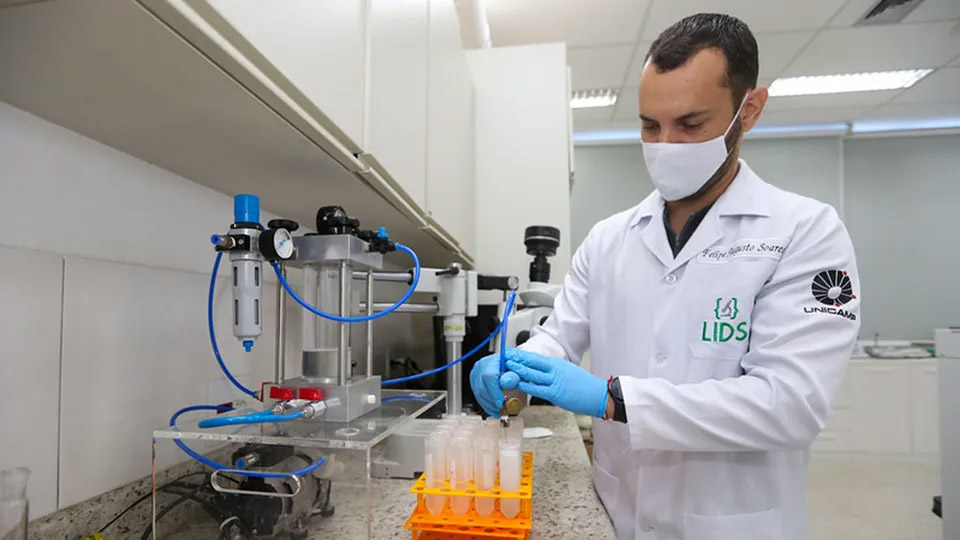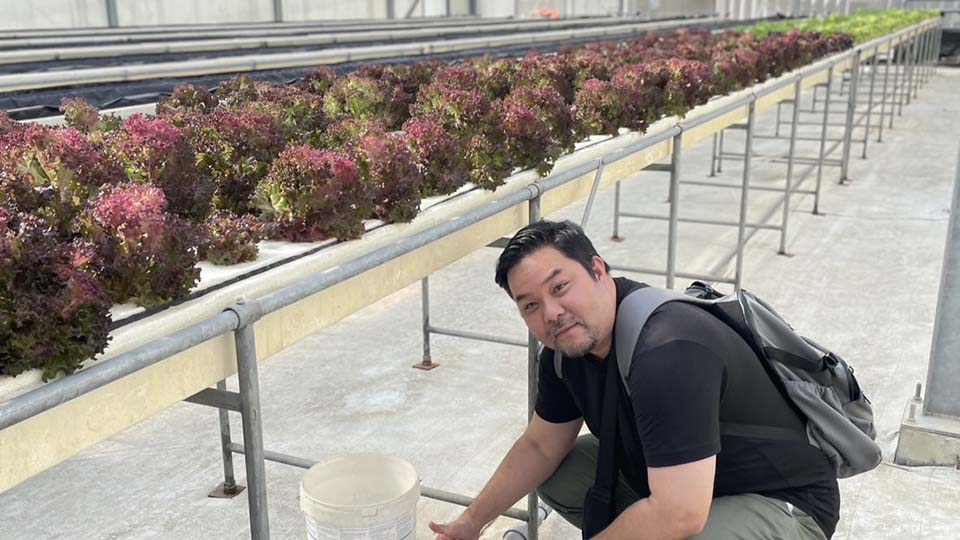Fonio Harvesting Machine, Senegal
Cereal grains have been cultivated for thousands of years and are one of the most significant sources of protein and energy for people in every corner of the world (International Research Journal of Biological Sciences (IRJBS), 2013). Perhaps you are familiar with maize, one of the more well-known cereal grains, of which over 46 million tons are produced annually. Cultivated even longer than maize, however, is fonio, which comes in white (digerati exilis) or black (digerati ibura) varieties, and has been harvested in West Africa for thousands of years (African Journal of Biotechnology, 2013). Fonio is an adaptable, hardy grain that is resilient to droughts, rich in nutrients and protein, and that can be a major part of one’s diet, especially during food shortages (Wageningen University, 2012).

Despite the proliferous nature, health benefits, and millennia long tradition of cultivating this grain, it has in fact become a marginal crop. One of the primary reasons for this decline is that processing the grains is a considerably expensive and time-consuming endeavor (University of London, 2005). With extremely small and fragile kernels that must be de-husked for processing, the laborious activity of harvesting fonio, and a shift to non-traditional grains in Western Africa, as led to undervaluation of the crop (Wageningen University, 2012).
As Western Africa faced nutritional challenges for its populations in the 1990s, Mr. Sanoussi Diakité, an engineer and teacher from the Republic of Senegal (Senegal), saw an opportunity to bring a lost crop back to mainstream production, thus providing an integral food source for millions (Rolex Awards, 2013). Drawing on his experience as an engineer, Mr. Diakité invented a machine that de-husks fonio, making it much faster and easier to process. With the assistance of organizations such as the World Bank and the Agricultural Research for Development (CIRAD) research center in France, the inventor has been able to bring his creation to people in need (CIRAD, 2009).
Goods with specific geographical origin
Due in part to its ecological adaptability, fonio survives in an area with unique climatic and geographical features in which many other cereal grains would find challenging (Wageningen University, 2012). Growing in a vast swath of sub-Saharan Africa in semi-arid and sub-tropical zones, it is native to countries such as Senegal, Guinea, Mali, and can be found as far east as Nigeria (CIRAD, 2009). Fonio thrives in latitudes between eight and fourteen degrees north of the equator. It is easily cultivated in dry savannah regions, mountainous and hilly areas, in nutrient-poor soil, and without the need for fertilizers or pesticides (Wageningen University, 2012).
Easily surviving droughts, fonio’s hardiness and adaptability have made it one of the most diverse and widely cultivated plant species in Western Africa (IRJBS, 2013) and make it a good source of food for countries in the region (National Geographic, 2014). Fast growing and nutrient rich, many farmers grow fonio while they are waiting for other crops to mature, or if drought limits their production (Worldwatch Institute, 2010). Situated at the intersection of various climactic zones and the southern portion of the country and between three and twelve degrees north latitude (UNDP), Senegal’s climate - particularly its hot, humid southern region marked by sandy plains, steppes, and grassland - is well suited for fonio cultivation.

Traditional knowledge
Planting, harvesting, processing, and cooking fonio has a long tradition throughout Western Africa and Senegal, with techniques passed down through families and communities over millennia on how to properly process the small, light, and fragile grain (IRJBS, 2013). With its high nutritional content, there are a myriad of uses for fonio, from using it to make peanut sauce and porridge to using it in food served at religious or traditional ceremonies (Worldwatch Institute, 2010). Farmers cultivating fonio have honed their knowledge through millennia to use all parts of the plant, such as the chaff and straw for animal food, mixing the straw with clay to build walls, and even using it to make a traditional beer.
That being said, even though agricultural processing technology has advanced fonio is still cultivated and processed primarily by hand. Farmers have learned the type of soil and conditions that fonio thrives in - light, sandy soil with average temperatures of 25 to 30 degrees celsius and 1,000 millimeters of rain annually - and use a hoe to put them in shallow holes in the ground (CIRAD, 2009).
Once the crop is ready for harvesting, it is mixed with sand and pounded and threshed (separating the grain from the plant) using a pestle (a heavy tool with a round end), after which the water is washed away (Innov8tiv Magazine, 2014). While this traditional knowledge has allowed for fonio to be cultivated and processed for thousands of years, the grueling work required to do so has also resulted in the crop’s decline, and what was once considered to be the “seed of the universe” in Malian mythology is now rarely consumed, particularly among those in urban environments (National Geographic, 2014).
Research and development
This is the problem that Mr. Diakité set out to solve. With climate change affecting Senegal in many adverse ways, one of which is an increase in temperature (UNDP), and Senegal one of the lowest overall producers of the healthy grain in Western Africa (approximately 1,500 tons annually over an area of 3,000 hectares according to CIRAD, 2009), the entrepreneur saw an opportunity that feed more people and serve as a bulwark to poor crop yields and the effects of climate change.

Mr. Diakité came up with the idea while a high school teacher in the early 1990s, and decided to put his mechanical engineering background to use. Native to the southern region of Sahel were fonio has been cultivated for over 500 years, he recalled the days of preparing it as a child and how time consuming and physically intensive it was (Rolex Awards, 2002). During his free time and with the help of his students, the inventor worked to develop a prototype of a machine that what would become the fonio husking machine, which was finished in 1993 (Innov8tiv Magazine, 2014).
Invention
When Mr. Diakité developed his prototype he found that using flexible plastic plates to rotate over the fonio grains would remove the husk without crushing the soft interior, which could be easily damaged. Normally it takes a few hours of hard manual labor to remove the husks from only two kilograms of fonio before it can be ready for cooking, and up to three days to process enough of it for viable use in a family or community (Rolex Awards, 2013).
Through perfecting his machine via field tests, the inventor was able to get it to process five kilograms of fonio in only eight minutes (Innov8tiv Magazine, 2014), removing over 99 percent of the husk from the grains (Rolex Awards, 2002). This allows for quicker processing and for farmers to plant more fonio, thus encouraging more cultivation of the traditional crop. In addition, the invention does not require high amounts of water, up to 15 liters of which are required when husking fonio the traditional way.
After winning the 1996 Rolex Award for Applied Technology, Mr. Diakité discussed his role in instilling the importance of invention among his students, saying “Invention can seem so far removed from everyday life, but they can talk to me and touch me, and they know that if I can do it, then so can they.”

Patent
Recognizing the importance of commercializing his invention (not only in Senegal but in other African countries), Mr. Diakité took advantage of the IP system. One goal was to help increase the cultivation and use of fonio, while another was to extend that use beyond his home country, selling the machines for a reasonable rate, which would allow him to make more machines (Rolex Awards, 2013). To that end, in 1994 the entrepreneur made a patent application for his invention with the African Intellectual Property Organization (OAPI) under Reference #9944.
The patent proved to be successful in that it attracted interest and investment from foreign organizations. In 1995, the African Development Foundation, based in Washington, DC, USA, saw the stability and potential of the invention and funded the construction of five next generation prototype fonio husking machines, which was in tandem with a year long study of these machines’ use and effectiveness (Saudi Armco World, 1997). In turn, this increased worldwide visibility of the machine, and in 1996 Mr. Diakité won the Rolex Awards for Enterprise and received a US$50,000 prize, which he put back into further development and production of his fonio husking machine.
Commercialization
Coming in at a cost between 1,200 and 2,000 Euros (depending on if it is powered by electricity or diesel fuel), the fonio husking machine is not particularly cost-effective, especially for an individual rural household. However, local and national governments, non-governmental organizations, and international agencies (such as the World Bank) have seen the benefits that the machine can provide and have purchased it for use in many communities. By 2010, the entrepreneur manufactured and sold over 100 machines and in 2013 the World Bank supported a program that has seen hundreds more dispersed throughout Senegal (Thomson Reuters Foundation, 2013). Such programs have helped farmers in Senegal and other Western African countries, as fonio is one of the few crops that can be successfully cultivated in very hot and dry climates (African Journal of Biotechnology, 2103).

Food security
Toiling away for hours at a time to get minimal return - compared to crops such as maize which require not as much effort - is one of the major reasons farmers have limited their fonio cultivation in Senegal and other countries (University of London, 2005). With Senegal being hit hard from climate change, the reintroduction of fonio could be a dramatic positive change for people at risk in the country and neighboring region (Innov8tiv Magazine, 2014). Accessible fonio unlocks an affordable and readily available staple food, which could help establish food security and minimize famine (The Tech Awards). Since water is also not used in the machine and is becoming increasingly scarce in Senegal and other Western African countries (European Union Institute for Security Studies, 2013), it also helps ensure the populations’ access to fresh water. Moreover, with fonio’s high nutritional content (IRJBS, 2013), the machine could also possibly provide many people in the region with a more nutrient rich diet (Worldwatch Institute, 2012).
Business results
Even though fonio is Africa’s oldest cultivated cereal - and it can tolerate harsh environments - in our modern era it has been overlooked. As climate change increases and food security continues to become a concern, Mr. Diakité’s invention has made people take another look at fonio. With a large potential market in Western Africa, by 2014 governments in countries such as Benin, Mali, and Guinea, where half of the world’s annual supply of fonio is processed by hand (Rolex Awards, 2010).
The entrepreneur has also won many awards, such as the Rolex Award (which brought in US$50,000) helped him continue to bring attention to his invention which has led to further commercialization. Mr. Diakité’ also won the first Grand Prix du Salon Africain de l’invention award in Dakar, Senegal in 1997, and in 2008 was a laureate of the Tech Awards in the health category (Tech Awards, 2014). In 2013, Mr. Diakité won the Social Innovation Award of the Innovation Prize for Africa, securing an endowment of US$25,000 (Africa Nouvelles, 2014). As the inventor explained to the Rolex Awards, his main goal is to promote the cultivation of fonio, an effort in which he is well on his way to achieving continued success.

Grain by grain
Once one of Africa’s most important crops that has largely fallen out of favor in our modern age, the fonio husking machine has changed people’s perceptions of the hardy crop. Many areas of Senegal and other countries have been revitalized - both in economic and food security terms - and fonio acceptance and production has steadily increased. Nostalgic for a nutritious yet laborious crop of his youth, one small grain at a time Mr. Diakité turned this emotion into an invention that has benefitted communities at home and abroad.



